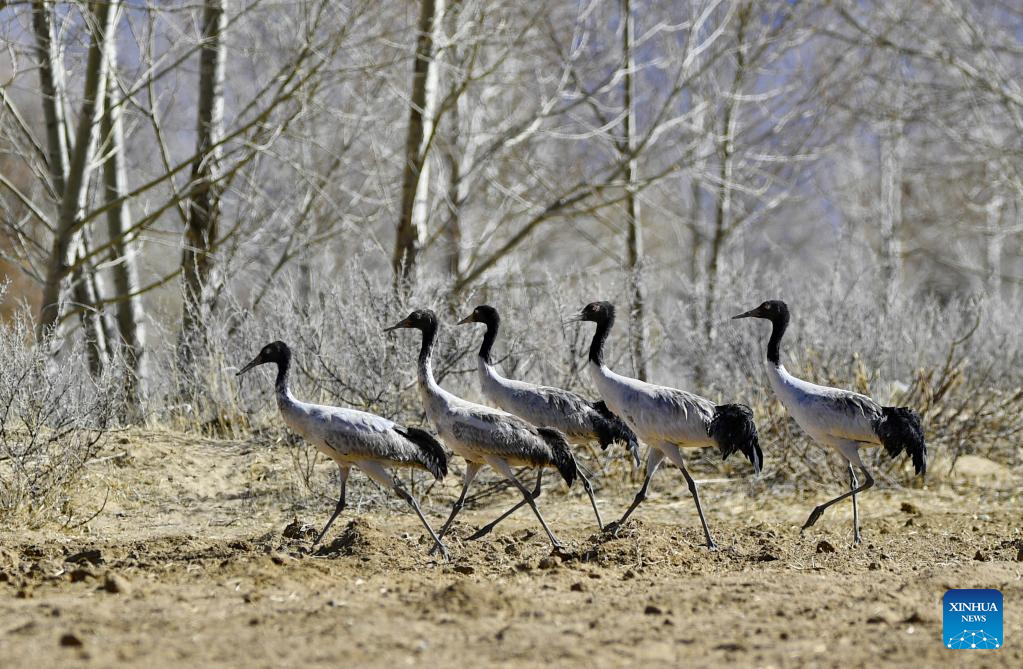
Black-necked cranes are pictured in Namling County of Xigaze City, southwest China's Tibet Autonomous Region, March 29, 2022.
Tibet has seen a steady increase in endangered wildlife population, thanks to its continuous efforts over the past decades. The population of black-necked cranes has exceeded 10,000 from 1,000 to 3,000 previously. (Xinhua/Zhang Rufeng)
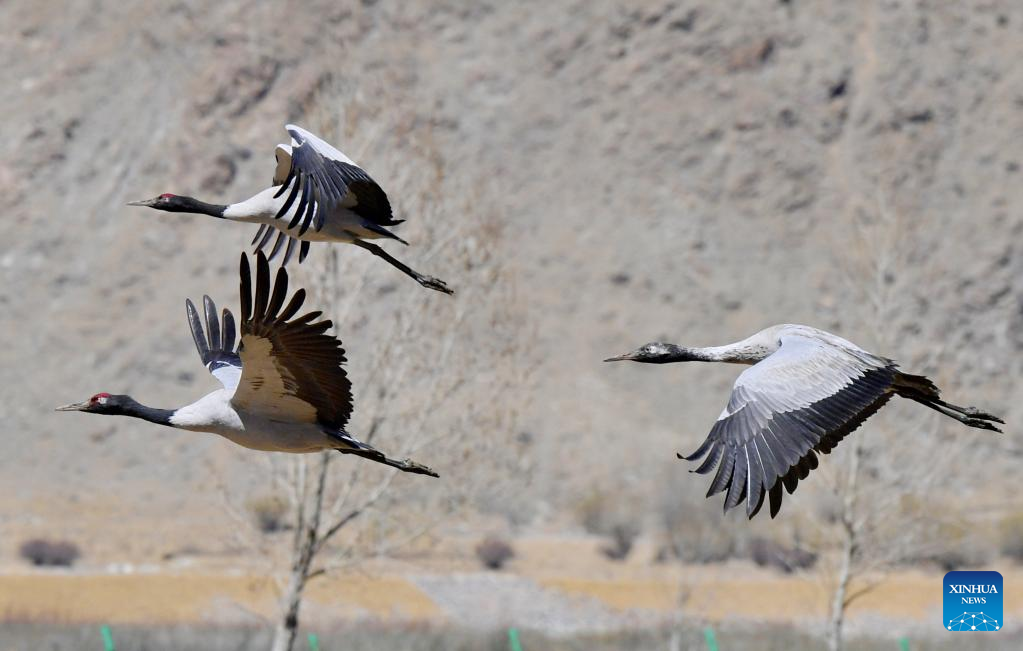
Black-necked cranes fly in Namling County of Xigaze City, southwest China's Tibet Autonomous Region, March 29, 2022.
Tibet has seen a steady increase in endangered wildlife population, thanks to its continuous efforts over the past decades. The population of black-necked cranes has exceeded 10,000 from 1,000 to 3,000 previously. (Xinhua/Zhang Rufeng)
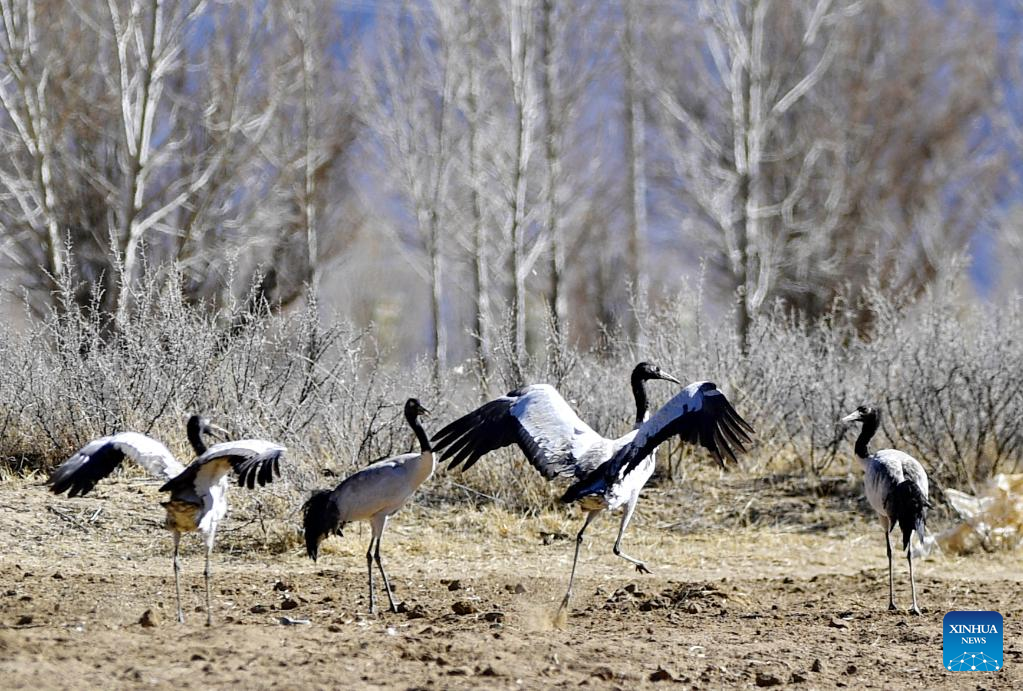
Black-necked cranes are pictured in Namling County of Xigaze City, southwest China's Tibet Autonomous Region, March 29, 2022.
Tibet has seen a steady increase in endangered wildlife population, thanks to its continuous efforts over the past decades. The population of black-necked cranes has exceeded 10,000 from 1,000 to 3,000 previously. (Xinhua/Zhang Rufeng)
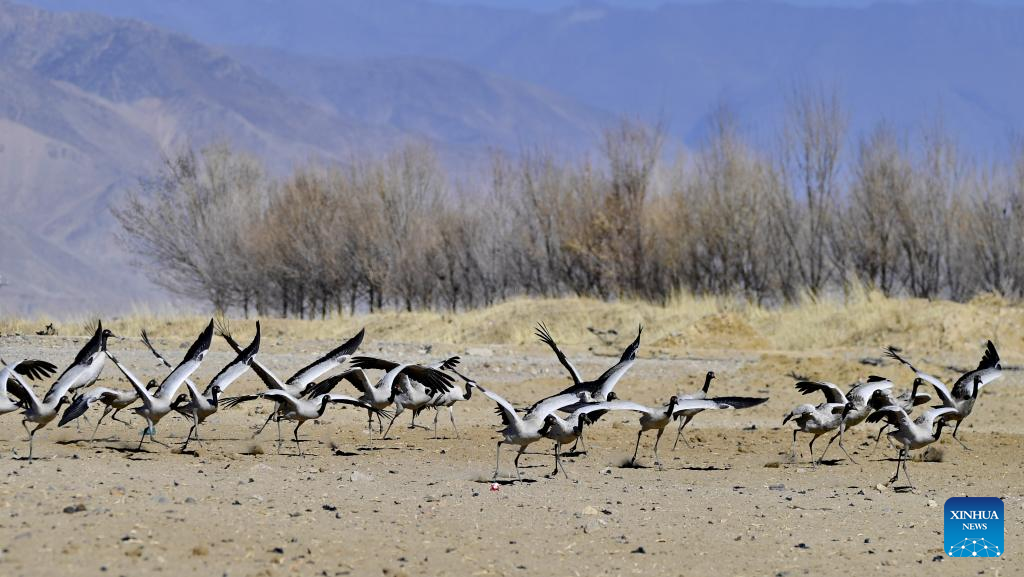
Black-necked cranes are pictured in Namling County of Xigaze City, southwest China's Tibet Autonomous Region, March 29, 2022.
Tibet has seen a steady increase in endangered wildlife population, thanks to its continuous efforts over the past decades. The population of black-necked cranes has exceeded 10,000 from 1,000 to 3,000 previously. (Xinhua/Zhang Rufeng)
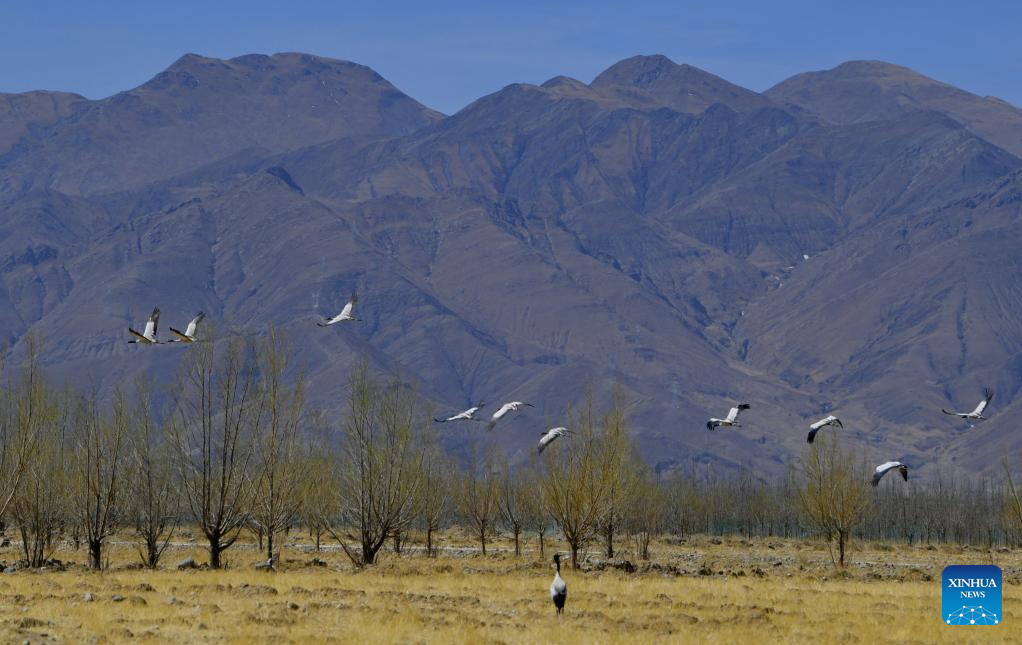
Black-necked cranes fly in Namling County of Xigaze City, southwest China's Tibet Autonomous Region, March 29, 2022.
Tibet has seen a steady increase in endangered wildlife population, thanks to its continuous efforts over the past decades. The population of black-necked cranes has exceeded 10,000 from 1,000 to 3,000 previously. (Xinhua/Zhang Rufeng)
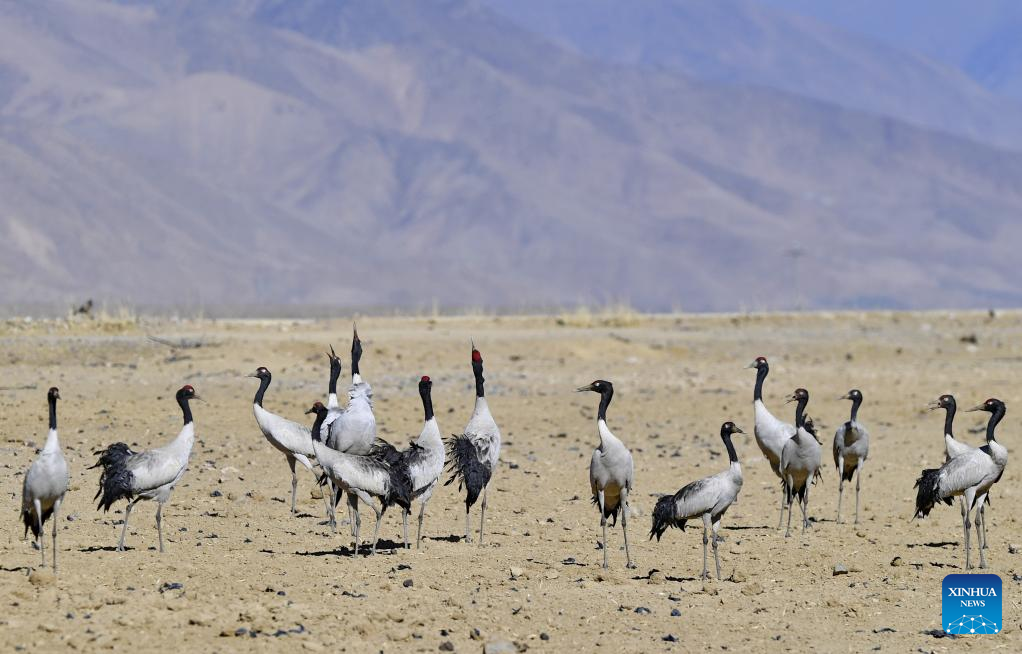
Black-necked cranes are pictured in Namling County of Xigaze City, southwest China's Tibet Autonomous Region, March 29, 2022.
Tibet has seen a steady increase in endangered wildlife population, thanks to its continuous efforts over the past decades. The population of black-necked cranes has exceeded 10,000 from 1,000 to 3,000 previously. (Xinhua/Zhang Rufeng)



